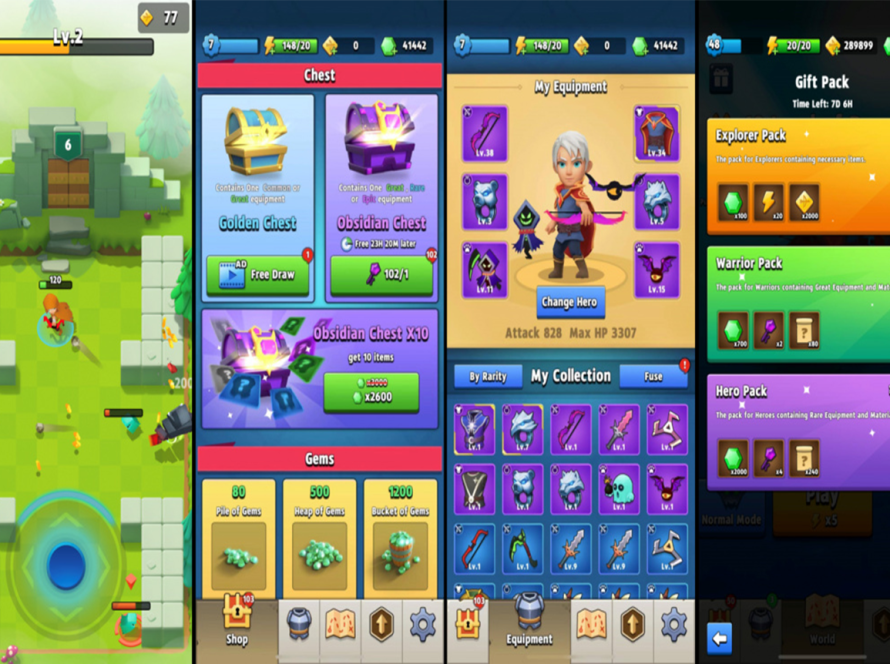The trend of game art NFTs is steadily growing and is poised to become the future of the 2D gaming market. This opens up new opportunities for developers and brings about a gaming experience in the 2D realm that is more unique than ever before. To delve deeper, let’s explore: Tokenizing the fun: the rise of game art NFTs and their impact on gaming economies.
What are game art NFTs 2D?
Game art NFTs 2D are digital artworks utilized within 2D games, encoded on the blockchain to ensure authenticity and exclusive ownership. They may include characters, items, costumes, weapons, accessories, maps,…, NFTs can be bought, sold, and traded by players. For example, in the game Axie Infinity, 2D Game art NFTs are used to represent unique digital creatures known as “Axies”. Each Axie is a unique NFTs, capable of ownership and trading on the Axie Infinity blockchain.
Characteristics of Game Art NFTs 2D
- Uniqueness: Each Game art NFT 2D has its own unique identifier code, making it impossible to duplicate or modify.
- Value: The value of Game Art NFTs is determined by the market and can fluctuate over time.
- True Ownership: Players of 2D games can fully own their NFT assets, no longer relying on the game publisher.
- Tradable: Players can buy, sell and trade NFTs on open markets, creating a new in-game economy.
- Rarity: Each NFT in the 2D game is unique and irreplaceable, providing high collectible value.
- Transparency: The blockchain records the ownership and transaction history of NFTs, ensuring transparency and security.
The rise of game art NFTs
The game art NFT market is undergoing a period of explosive growth. According to DappRadar, NFTs in games have increased significantly from 2021 to 2022 and continued to surge in the first quarter of 2023. Specifically:
In 2022, the sales of NFTs in games reached $4.6 billion, marking a 225% increase from 2021. In the first quarter of 2023, Game Art NFT sales hit $4.8 billion, rising by 222% compared to the same period the previous year.
In addition, major game publishers such as Ubisoft, Square Enix, EA, and many other developers have also begun integrating NFTs into their games.
The significant growth of Game Art NFTs can be explained by the following factors:
- Development of blockchain technology: Blockchain technology enables the creation of unique and verifiable digital assets in 2D games. This makes owning and trading in-game assets more trustworthy than ever before.
- Demand for ownership of digital assets: Gamers are seeking ways to own and control assets in their favorite 2D games. Clearly, Game Art NFTs provide an opportunity for them to do so, sparking vibrant buying and selling activities within the gaming community.
- Influx of major investors: Large investors are recognizing the potential of the NFT market and are investing in NFT-related projects. The interest from these investors not only drives market development but also creates numerous opportunities for game developers.
Impact of game art NFTs on gaming economies
The rise of Game Art NFTs is significantly impacting gaming economies, and here we will analyze both the positive and negative.
Positive impact of game art NFTs on gaming economies
- Increased income for players: Game Art NFTs allow players to own and trade in-game assets, creating new opportunities for earning money. Players can earn by selling NFT assets they acquire in-game, participating in tournaments, or providing services to other players.
- Ownership and trading of items contribute to a stronger player community. Through this, players can collaborate, share strategies, and foster deeper connections with the game. Consequently, the gaming market becomes more engaging than ever.
- The “play-to-earn” model further encourages and attracts more new players. This leads to overall development in the gaming market. As more players join, the gaming market will continue to grow stronger.
- 2D game developers applying Game Art NFTs can potentially earn substantial revenues from the market.
Overall, the development of 2D Game Art NFTs creates new opportunities and potential for both players and game developers. Predictions suggest that the gaming market will experience a resurgence in growth.
Negative impact of game art NFTs on gaming economies
- Investment risks: The NFT market is still new and volatile, posing risks for players investing in game art NFTs. Many believe that the NFT market carries the risk of being exploited for money laundering.
- Increased costs for players: Buying and selling Game Art NFTs can be costly due to high transaction fees. Consequently, players may not reap significant economic benefits from participating in the NFT market.
- Influence on game balance: Trading NFT assets may affect game balance, creating advantages for players with more money.
- Environmental impact: The process of creating and trading NFTs can consume significant energy, affecting the environment. Specifically, using blockchains may increase carbon emissions and consume more energy than traditional trading methods, especially as energy consumption from cryptocurrency mining increases.
In Conclusion
We have explored Tokenizing the fun: The rise of game art NFTs and their impact on gaming economies. Through this, we can see numerous new opportunities in the gaming market. By embracing this trend, 2D game developers can tap into new revenue streams, enhance community interaction, and deliver outstanding gaming experiences to players worldwide. However, like any emerging trend, there are always challenges and considerations to be mindful of. The volatility of the NFT market and associated investment risks require careful navigation. Thank you for following our article at 7swordsgames.




